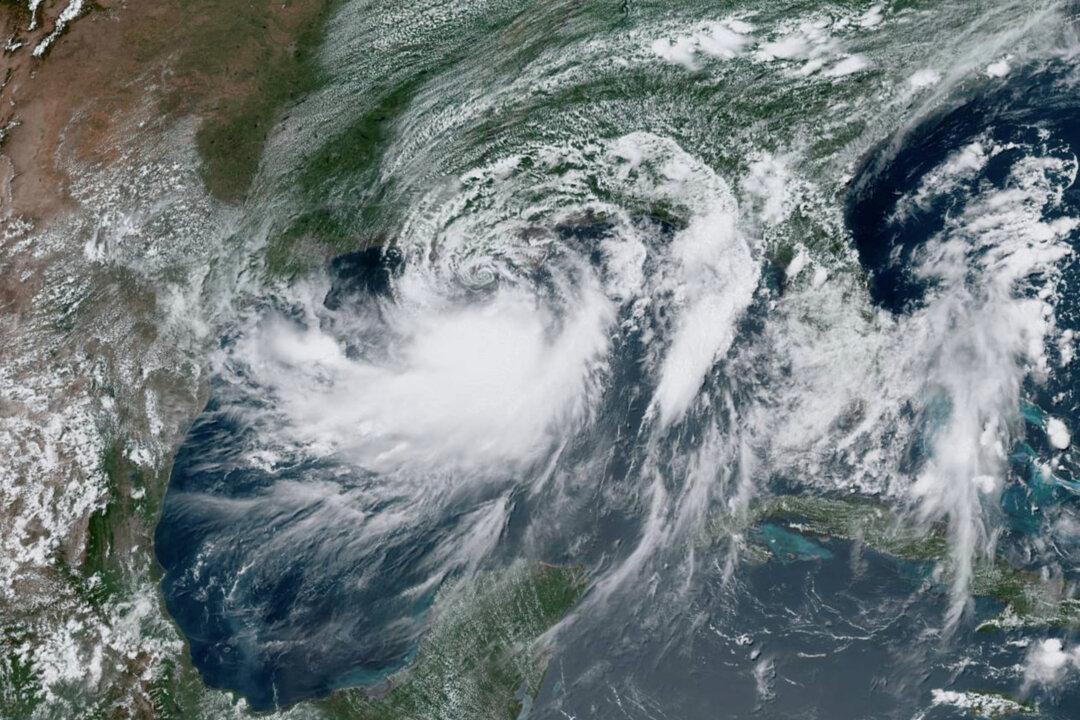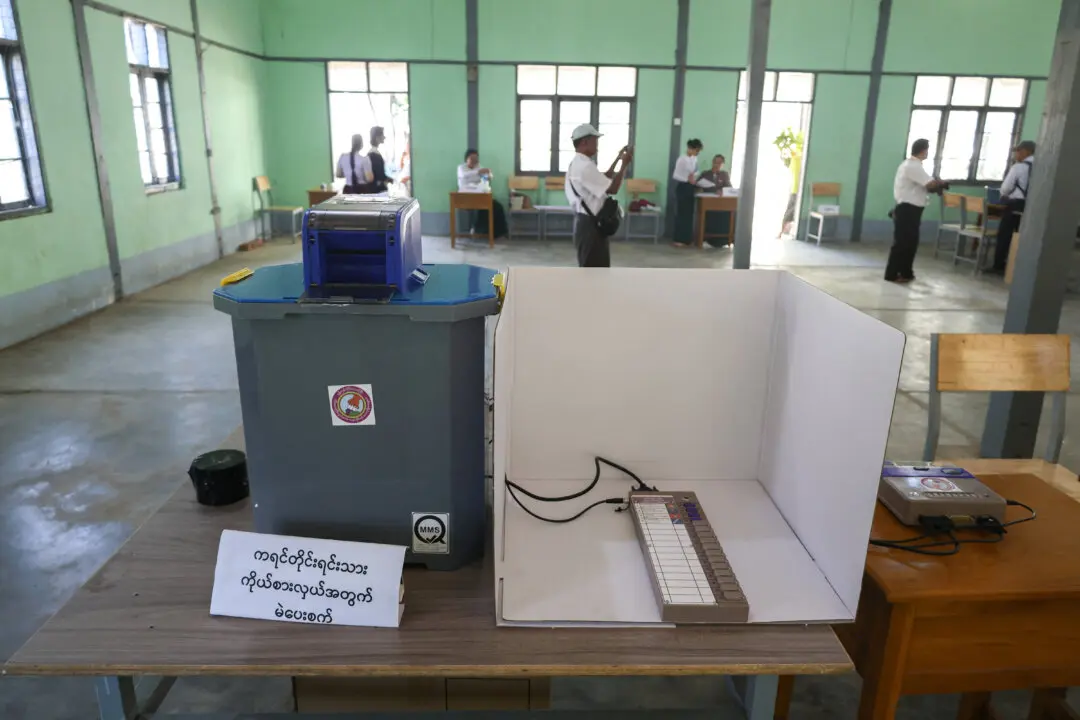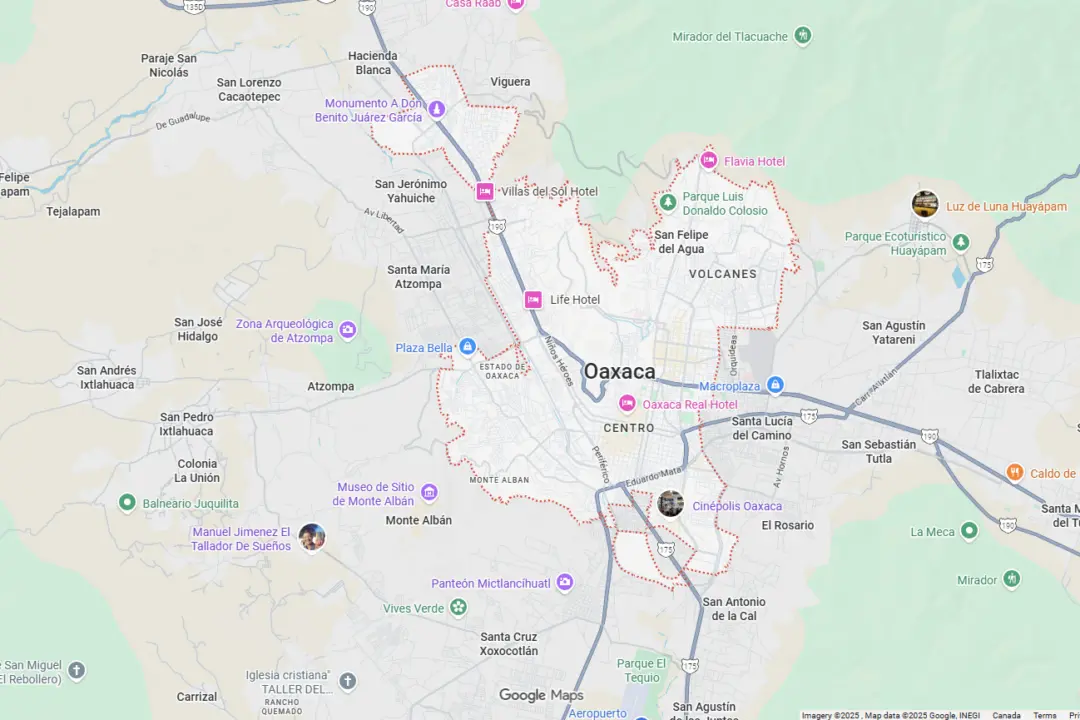NEW ORLEANS—Tropical Storm Barry, poised to make landfall as the first Atlantic hurricane of 2019, churned ever closer to Louisiana’s shore on July 13 morning as most New Orleans residents huddled at home, or in bars, bracing for the threat of severe flooding.
The storm was just shy of hurricane strength about 7 a.m. local time, packing maximum sustained winds of 70 miles per hour. It was on track to reach hurricane strength shortly before crossing the Louisiana coastline southwest of New Orleans, the National Weather Service said.





